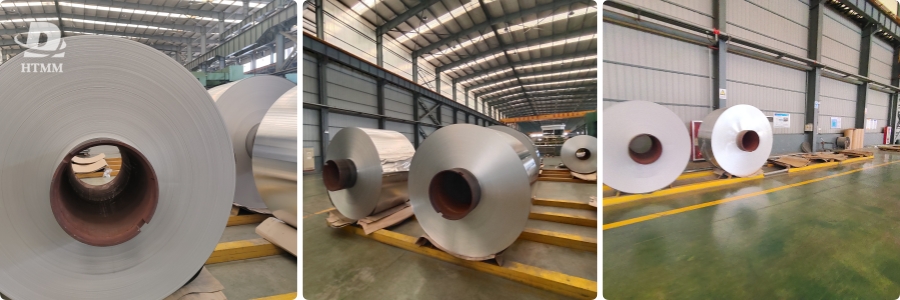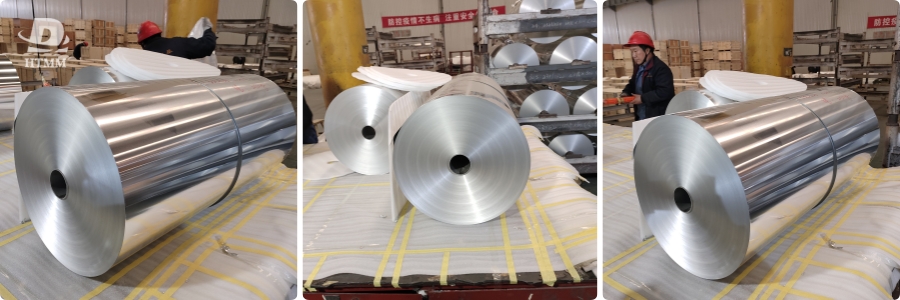We will go into the fundamentals as well as the more technical aspects of this commodity material in this extensive piece. We'll explore the various grades, package conversion techniques, and the production process. Examples from everyday life will show how aluminum foil improves different final products. We'll also talk about new developments and dispel common myths.

You will have a comprehensive grasp of the science and benefits of household aluminum foil by the end. Let's begin by outlining the reasons aluminum makes the best foil material.
Aluminum: The Ideal Foil Substance
Fundamentally, molten aluminum alloy is processed by cold rolling as a thermomechanical process to create aluminum foil. What therefore makes aluminum such a popular option?
To begin with, aluminum is one of the elements that is most plentiful on Earth, making large-scale production cost-effective. Its low weight—roughly one-third that of steel or copper—allows for significant material and shipping cost savings.
Additionally, aluminum is incredibly formable without breaking, enabling complex designs. When damaged, its protective layer of aluminum oxide instantly repairs itself, giving it corrosion resistance.
Most remarkably, aluminum is an inert substance that is permitted for use in food contact applications and does not present any harmful safety risks. In keeping with ecological objectives, it is completely recyclable without losing purity. Aluminum has a unique set of beneficial qualities that no other material can match, making it the most popular choice for foil worldwide.
Fundamentals of Microstructure
Aluminum's intrinsic properties make foiling possible, but genuine performance comes from advanced metallurgy. The FCC crystalline structure of aluminum is fractured and reoriented by cold rolling due to dislocations brought about by plastic deformation. This leads to:
- Preferred grain orientations that communicate anisotropic properties - Accumulated dislocations that obstruct slip while forming - Elevated yield strength up to 40% above annealed tempers
The remarkable strength, formability, and surface qualities that are necessary for conversion applications are provided by this carefully crafted microstructure. Ideal temperatures improve qualities.
Constant Production of Coils
The predominant technique for fabricating foils involves the continuous use of twin roller casting and multi-stand cold rolling:
- A thin strip of molten aluminum is cast in between cooled rolls that rotate counter-clockwise.
- The strip is passed through 10–20 sets of heavy reduction mill wheels in a consecutive manner.
- Each pass reduces thickness by up to 95%, hardening the material via labor.
- The very thin foil is carefully twisted onto large coils that each weigh between six and ten tons.
Highly consistent mechanical and dimensional properties are produced throughout whole coil widths with precise process control and customized tempers, making them ideal for downstream conversion. Shape is maintained by coiling for easy handling.
Important Physical Features
The following basic characteristics make household aluminum foil useful in a wide range of industries:
Measurements ranging from 7 μm to 125 μm are suitable for a variety of needs.
Strength without brittleness is imparted by typical yield strengths of 30 to 50 ksi. Extensive plastic deformation is made possible by elongation of around 40%.
Thermal conductivity allows heat to be dispersed during heating applications; surface smoothness improves printability and barrier at the sub-micron scale; and modulus of elasticity enables robust recovery and tight sealing.
Flexible packaging aluminum foil's tunable properties make it exceptionally adaptable for intricate packaging and production procedures.
Industrial Uses
Due to its comprehensive technological profile, flexible packaging aluminum foil is widely utilized.
- Food packaging materials such as liners, wraps, and laminates to preserve food
- Medical device encapsulation and blister packs for pharmaceuticals
- Utilizing corrosion resistance in building flashing, insulation, and vapor barriers
- Appliance parts and automotive heat shields that make use of formability
- Industrial packing, masking, and battery parts that take advantage of recyclable materials
Grades for Specialization
Although 3003 alloy disposable food container foil is suitable for most applications, higher grades also tackle conversion issues:
- 1190: Extended dexterity in making intricate thermoformed objects.
- 1235: Medical packaging with high strain-hardening specifically designed for autoclaving.
- 8011: Improved qualities allow for detailed deep drawing and part stamping.
- 8079: A susceptor material with high conductivity that interacts with microwaves.
- 1050: Higher purity is appropriate for crucial uses like protecting electronics.
Foil deliveries optimize performance windows by subtle alloy engineering and processing.
Huge Conversion Techniques
After coil stock, foil undergoes chemical, thermal, and mechanical transformations.
- Cutting and laminating to desired lengths and widths
- Annealing processes regulate surface characteristics and strength.
- Embossing intricate 3D shapes and forms
- Lamination joins foil to laminate composite barriers.
- Drawing or stamping to form complex enclosures; - Assembly to create completed components by welding or adhesive joining
The most value may be extracted from aluminum foil via careful selection and process execution.
Comprehensive Quality Control
Consistent qualities that are essential for demanding applications are ensured by quality management:
Incoming material inspection thoroughly examines each and every input.
- Production parameters are monitored using statistical process controls.
-Certified labs carry out extensive mechanical testing.
- Traceability links the source of raw materials to the completed foil.
- Third-party verification, such as regulatory and ISO certifications
- Thorough documentation supports the conformity of the product.

The dependability of disposable food container foil is supported by these strict quality control measures for consumers around the globe.
Changing thru Ingenuity
The material envelope is pushed by industry innovations to fulfill new needs:
- Barriers made on thin atomic layer deposition for advanced impermeability
- Nanocoatings that provide certain functions or microbiological resistance
- Micro-embossing produces complex textures with tactile and visual effects.
Composites made of polymers or fibers and meticulously etched foil
- Medical device tubing using multilayers that are precisely drawn as substitutes
New sustainable solutions are being driven by ongoing advancements in material science, which guarantee aluminum foil's continuous relevance.
Resolving Myths
There are certain misconceptions about the characteristics of aluminum foil jumbo roll manufacturer.
Foil is not only fragile but also lightweight and strong, making it suitable for demanding uses.
- Despite appearances, most tempers are comparable to plastic strengths.
- Aluminum foil may be recycled endlessly without losing its purity or degrading.
- Pure aluminum is safe to come into direct touch with food and has no health risks.
- Capabilities for intricate shaping extend beyond straightforward composite wrapping.
Accurate comprehension preserves foil's place as a world leader in advanced solutions.
In conclusion, aluminum foil is a versatile material that has been enhanced by cutting-edge innovation, not just a commodity. With its strong quality control and ongoing innovation, aluminum foil jumbo roll manufacturer offers the best possible value for package conversion and fabricating applications globally. The inherent benefits of pure, sustainable aluminum as a model material choice support its benefits.

